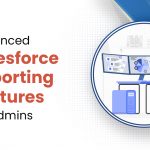Any Salesforce developer who wants to be at the top of his game should know how to work well with Lightning Components. With Lightning Components, it has been easier than ever to create scalable solutions. But to get that ease to build highly powerful and user-friendly solutions, it is important for developers to have an understanding of tools that support building Lightning Components. Having the knowledge of these tools is the first step towards building highly scalable solutions.
Earlier Salesforce developers were using Aura Components, but now is the age of Lightning Web Components, which has simplified development in many ways. When a developer knows how to build these components, everything else in the development just seems to get easier.
5 Tools for Building Lightning Components
Salesforce development involves a lot of aspects but it will all be simplified as developers start using Lightning Components. Let’s take a dive into learning about development tools that can be used to build these components.
- Visual Studio Code
To get started with building Lightning Components, it is important to have a code editor. Using Visual Studio Code can be the best option here. What makes it the best pick is the Salesforce Extension Pack that consists of powerful features that make it easier for developers to work on the Lightning Component framework.
- Lightning Component Library
Before you start building Lightning Components, it is important to have a look at Lightning Component Library. Developers could find the most relevant and helpful examples of components and their specifications here.
It acts like a reference library where one can learn about using the Lightning Components. You can even find a preview of how the components will work.
- Lightning Debug Mode
Salesforce developers can enable debug mode for debugging the complex JavaScipt code for Lightning Components. This mode won’t minify the JavaScript code. This will further help developers to obtain a detailed output for their code. In this mode, developers will also get the errors and warnings in detail, considering everything that is happening in the Salesforce Org.
- Google Chrome Developer Tools
From working on the program and debugging it, developers have a lot to deal with JavaScript. So they need to have an understanding of tools that can help with different tasks. Google Chrome Developer Tools enables developers to access multiple tools to work on different tasks whether it is to monitor network requests or to change CSS.
- Develop Locally
Developers should also know about the Local Development Server that can help with testing and preview components. It is a Salesforce CLI plug-in that helps developers to view and develop Lightning Components and also view the changes without actually publishing them.
Get Help from the Best Ones for Building Lightning Components
In this new age of Salesforce development, code reusability matters a lot and that’s all possible with Lightning Components. Building Lightning Components is something that each Salesforce developer should excel in that will help them to build Salesforce solutions that are scalable, user-friendly, and efficient.
To make sure your Lightning Components are built right, you can contact our team and get the assistance of the experts.


